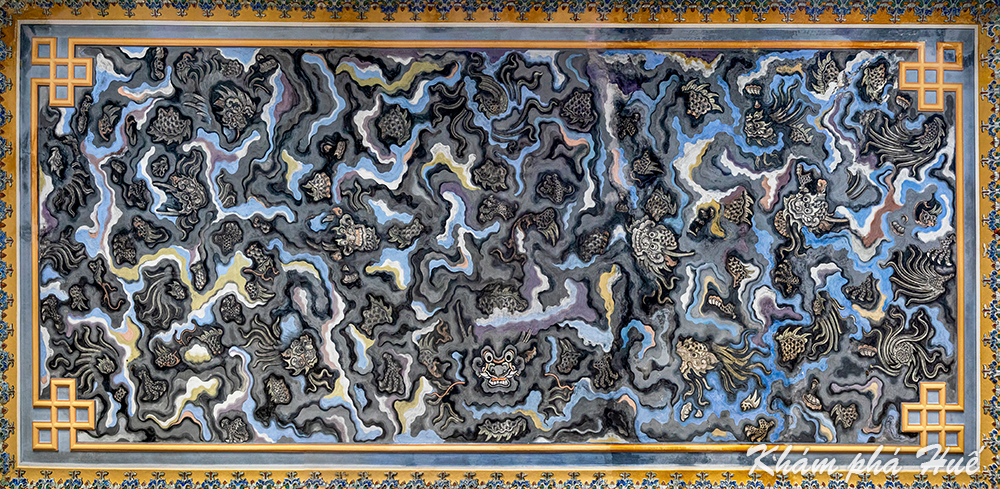In my humble opinion, the depiction of the dragon is one of the most successful artistic achievements of the Nguyễn Dynasty. The artisans of that time created dragon imagery not only to serve artistic purposes but also to adhere to contemporary social institutions and cultural norms. These reasons contributed to the diverse and rich representations of the dragon during the Nguyễn Dynasty. In Huế alone, the largest cultural, political, and artistic center of the period, this richness is evident in various aspects: space, material, artistic expression, and decorative themes.
In terms of space, dragons adorned temples, palaces, shrines, and pagodas both within and outside the Huế Imperial City. They appeared on roof ridges, roof corners, eaves, gable ends, rainwater gutters, screens, steps, beams, door frames, ceremonial gates, and other architectural elements. Dragons decorated nine dynastic urns, royal thrones, ceremonial canopies, and altars of the Nguyễn Dynasty kings and officials. They were the handles of seals, official stamps, and stationery items. Dragons were also motifs on the clothing, hats, and shoes of emperors and empresses, or standalone artworks in courtyards and gardens, such as the two dragon statues in front of the Duyệt Thị Đường Theatre. Additionally, dragons appeared on the Nine Sacred Cannons and as designs on the firearms of Emperor Thiệu Trị, which are still preserved in the Huế Museum of Royal Antiquities.
Regarding materials, Nguyễn Dynasty dragons were cast in bronze, carved in stone, sculpted in wood, bone, and ivory, and crafted from precious metals and gemstones. They appeared on fabrics and silk in the attire and headgear of royals and officials. Dragons were made from terracotta to decorate the Ngưng Hy Temple in Đồng Khánh’s tomb, plastered in lime at Gia Long’s tomb or the Thế Miếu Temple, assembled from ceramics and glass in Khải Định’s tomb, and crafted from enamel on the roof of Hòa Khiêm Temple in Tự Đức’s tomb. Dragons were decorative motifs on ordered porcelain, wall paintings on paper in Thái Bình Pavilion, or mirror paintings in Biểu Đức Temple in Thiệu Trị’s tomb.

The mural "Cửu Long Ẩn Vân" (Nine Dragons Hiding in the Clouds) at Khải Định Tomb
The artistic expression of Nguyễn Dynasty dragons in Huế was truly diverse: openwork carving, relief carving, bronze casting, gold and silver crafting, inlaying with mother-of-pearl and ceramics, embroidery on fabric, painting with pigments on paper, and porcelain. Sometimes they were formed into three-dimensional shapes, other times depicted on flat surfaces or painted under a layer of glaze. Their forms were indeed varied and plentiful.
The thematic representation of dragons during the Nguyễn Dynasty was also distinctive. Motifs such as "two dragons fighting over a pearl," "two dragons facing the sun," "dragon playing with water," "returning dragon," "coiled dragon," "dragon chasing," "dragon and phoenix," "dragon and unicorn," "dragon longevity," "dragon and clouds in festive gathering," "bamboo transforming into dragon," and &